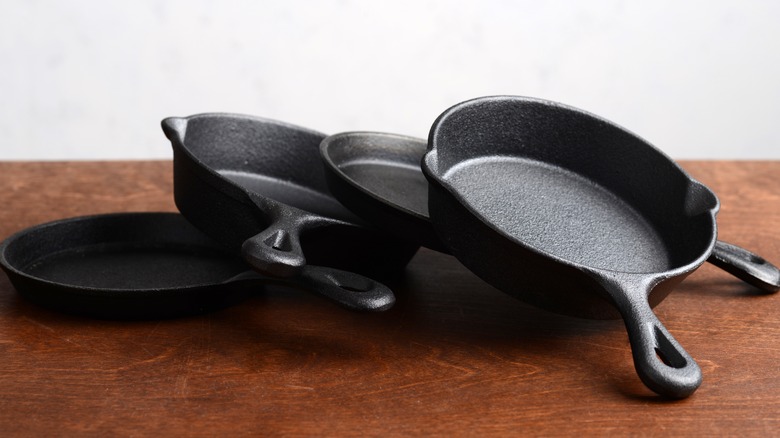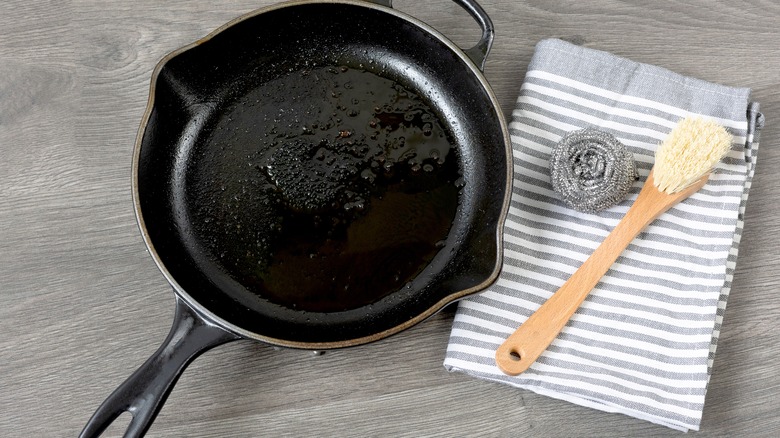Why It's Important To Re-Season Your Cast Iron Skillet
When it comes to skillets and pans, many cooks swear by their beloved cast-iron cookware. If you've never used it before, once you understand the ways to care for and properly use cast-iron, you may be hooked. Although there are a few drawbacks to it, most notably how heavy the pans are and the fact that they can't be tossed into the dishwasher, there are numerous advantages to using cast-iron.
A few benefits include the way the cookware retains heat well, it's affordable, and easy to clean, as noted by Healthline. Further, when cast-iron is seasoned well, it's a truly nonstick pan (via America's Test Kitchen). You can also use less oil when cooking and the cookware is a chemical-free alternative to nonstick pans, according to Eating Well. Despite all the benefits, there's another tricky thing about cast iron — it's only as good as the care you put into it.
How and when to re-season
In order to fully reap those cast-iron advantages, you'll have to keep the seasoning intact to ensure your cookware stays in optimal condition, as reported by The New York Times. This means you'll need to re-season the pan by applying a thin layer of oil to the cookware and then baking the oiled pan at 450 to 500 F degrees for one hour, per the Lodge.
How often you re-season depends on factors such as what you prepare in your cookware, since highly acidic foods will wear down the seasoning the fastest, as well as how much you use it, according to Southern Living. It's important to remember that if you don't re-season cast iron regularly, most of the cookware's nonstick benefits go out the window. As Sparkling Penny notes, with proper care including cleaning, drying, and re-seasoning it, cast-iron is a versatile cookware that can last for a lifetime.

